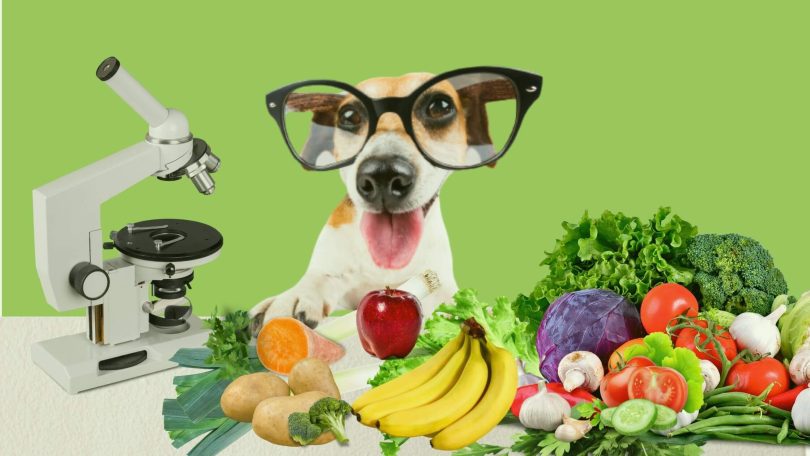Even though a product is labeled “all natural”, I know it’s not natural dog food. When I go shopping for my natural dog food, I can buy frozen lasagna, quick rice pilaf, or a can of soup. It’s not something I usually eat because it’s made from preservatives. I’m not the only one who feels this way. So how can we forget that even the most expensive natural dog food contains ingredients that have been treated, recycled and stored for our convenience, regardless of their original quality? What happened to our natural dog food nutritional compass for our pets to cause it to get so lost?
In the end, does that matter what kind of pet food we feed our dogs if they’re healthy on kibble? We’ll get into the nitty-gritty of your dog’s dietary needs, so stay tuned. In the right hands, homemade meals made from natural dog food can provide your fido with the nutrition and pleasure they need to thrive. In the end, the decision should be up to you, but you must be well-educated to make an intelligent one.
Requirements for proper nutrition
Dietary variety for dogs
If you feed your dog a diverse diet, particularly if it is a diet based on natural dog food, he will have a better chance of living a long life. A dog’s diet should include specific sources of nutrients other than meat, such as vegetables and fruits, to help their bodies digest and use the fats and proteins they consume.
Take a closer look at the nutritional profiles developed using the most up-to-date and reliable research. The AAFCO criteria require pet food makers to adhere to four primary categories: protein, fat, vitamins, and minerals, which are the building blocks of a nutritious diet for dogs. For further in-depth information, consult the NRC’s publication The Nutrient Needs of Dogs and Cats or the AAFCO profiles on the FDA website, both of which provide excellent resources.
The animal’s flesh
In most conventional pet meals, wheat gluten can be prepared and coated in gelatin to resemble meat. An adult dog’s protein need is based on its weight, life stage, and activity level and must be at least 18 percent of the dry components in its diet. When using this metric, be sure to account for the water content of the meal you’re measuring; canned food has around 75% water, kibbled food contains 10% water, and fresh meat contains about 70% water. Fresh meat, which makes up roughly 70% of the dry weight of a dog’s food, is a simple way to meet this dietary requirement.
It was previously mentioned that the crude protein content of commercial pet meals is a proxy measurement. To calculate the amount of crude protein in a food, the amount of nitrogen must be measured. However, other nitrogen-containing compounds can pass for protein testing and skew the results.
The necessary acids found in animal protein are the closest to those required by dogs; hence this is the preferred source of protein for canines.
The type of protein a dog consumes is just as crucial as the quantity of his diet. The quality of a protein source is determined by the ratio of the individual amino acids it contains. Twenty amino acids make up a protein, and dogs can produce around half of that number independently. Because they can’t be created in the body, “essential” amino acids must be obtained from the diet. The quality of protein is defined by how well the amino acid quantities in a protein meet the animal’s requirements that consume it. Because the necessary acids included in animal protein are the closest match to those that dogs require, it is ideal that dogs consume animal protein. Grass has many essential amino acids; however, it is an integral part of the diet. Pet food makers typically substitute grains for meat and add the required amino acids to save money because the meat is so expensive.
Fat Fats and fatty acid combinations are essential for various functions, including helping our bodies acquire vitamins, maintaining cell structure, and providing energy. Fat should make up between 11 and 12 percent of a dog’s diet. Saturated fats are less of an issue for dogs than for people because of the higher levels of HDL seen in canines (good cholesterol). Omega-3 and Omega-6 fatty acid concentrations and their ratio to each other are critical. To avoid skin and coat problems, dogs need linoleic acid from Omega-6 and alpha-linoleic acid (ALA) from Omega-3, which their bodies turn to DHA, which is essential. We don’t know enough about how much Omega-6 inhibits ALA’s conversion to DHA. Thus, maintaining the proper ratio between both the fatty acids is critical. Dogs can get enough fat from various natural food for dogs, including meat, eggs, fish, and nuts.
Commercial Pet Food Poses Risks
Food products for industry
Consumer-grade pet food is generally safe for pets to eat. There is no evidence that it is superior or worse than the alternative. What are the hazards or downsides of feeding commercial pet diets if they are all the same?
The recipe may go awry: inquiry into feeding
Pet food manufacturers have three options for providing the needed statement of guaranteed analysis: conduct a feeding study, formulate foods particularly to meet the AAFCO profile requirements, or use formulas similar to those that have already been tested in a feeding study. In Part II of this series, we looked at all three options. Feeding studies are the most reliable approach to ensure that a meal recipe meets nutritional requirements. Aside from the cost and time required for feeding studies, businesses often use other options, leading to complications.
The AAFCO nutritional profiles aren’t enough to formulate a dog food recipe because it’s hard to know how well dogs digest and utilize the mixture of nutrients they consume without doing a feeding study. As a result, the AAFCO has increased the nutrient profile needed to compensate for this. Still, if your dog isn’t absorbing the nutrient, it doesn’t matter how many milligrams of the vitamin he is excreting. He hasn’t stopped peeing it all out.
Sometimes we don’t know what we don’t know: the Vet Education Deficit
The practice of providing your family with an unidentifiable blend of processed foods rather than natural, fresh meals may pose dangers to them that we are not aware of yet. How can we tell if the substance in the bag is up to par without conducting long-term research (which there aren’t any of)? You might believe that getting a referral from your physician is the best course of action, and while some veterinarians may be able to provide answers, the majority of them are not. The partnerships between veterinarians and pet food businesses are similar to the connections between doctors and pharmaceutical firms in which veterinarians make money by marketing specific food brands to their patients. On the other hand, veterinarians should be of great concern to pet owners for yet another reason: the majority of them receive very little formal education in the field of small animal nutrition. A large part of what veterinarians know comes from pet food producers, who spend a significant amount of money training and promoting themselves to consumers.
A dog is consuming raw meat
Preparing your pet food is the only viable alternative to commercial pet food available. Typical mistake individuals make when preparing meals for their dogs at home is not offering a diversified diet for the dog in question. Raw dog good meat, meat, bones, and organs must be complemented with fresh fruits and vegetables to ensure proper dog nutrition. While fruits and vegetables in and of themselves are good sources of nourishment, the poorer quality of meat available in grocery stores nowadays makes them an incredibly effective way to make up for this shortcoming. In contrast to wild animal protein and fat, which is high in all of the amino acids, fats and vitamins, and minerals so, because animals themselves consume a wide variety of natural foods for dogs in a natural environment, the value, and composition of meat purchased from a grocery store is very distinct.
While dogs are less vulnerable to deadly bacteria present on raw meat than humans, they are not entirely immune to these bacteria themselves. Even though it is a little dangerous, it is a risk.
The hassle of preparing dog food at home is the other downside. But for that, we have on this site several natural homemade recipes for dogs that are easy and practical to make. Click here and check out some.
Nutritionally balanced nutrition requires more effort and time, and failing to put in the necessary action and research might have severe effects if not done correctly. In some cases, even if the food you feed your dog is deficient in one or two critical nutrients, the product can be a sick pet. While this is true for humans – our nutrient needs are complicated – most of us manage to maintain a healthy lifestyle without evaluating the nutritional makeup of every meal we consume.
Even though there is a lot to take in, learning about nutrition and making choices about what to feed your dog is fairly straightforward
Decide on what you are happy with. Dog owners must decide whether to feed their dog commercial pet food, home-prepared meals, or a combination of the two types of na food. Commercial pet food is perfectly acceptable – it is certainly more convenient – but there are significant advantages to feeding your pet home-prepared food that natural food for dogs should be considered. Make sure to read the NRC publishing for a more thorough knowledge of what is required if you decide to prepare meals for your dog at home. The most important thing is that you make an informed decision consistent with your lifestyle.
Make Use of Your Common Sense Don’t forget about the feeling of disorientation I mentioned at the start of this story. This is the situation in which it applies. Processed food is simply that: processed food. It is not miraculous mush. Fresh food is merely that: fresh food. It is not dangerous. Cooking residence meals for your dog is not only possible but also not that difficult once you get into the habit of doing so regularly. With the AAFCO nutritional profiles and a little sound judgment as to your guide, you can include meat, meat, fruits, vegetables, and even grains in a healthy diet. To get started, check out their website. Learn about the significant differences in nutritional requirements between humans and dogs, and prepare yourself to deal with marketing gimmicks designed to benefit the industry rather than you, your pocket, or your dog. To be on the safe side, take a daily vitamin and adhere to the nutritional principles discussed in detail further down.
Follow the fundamental principles of balance and variety. When it comes to feeding your children or other loved ones, the basic principles of nutrition that should guide you are balance, diversity, and moderation. If you provide your pet with a diversified diet, it is pretty tricky for her to acquire a deficiency. It never occurs to me to feed my dogs the same thing every night, particularly various types of kibble, if I have run from fresh food. They never complain about having stomach problems because they are accustomed to eating a varied diet. My dogs will never be prone to the kinds of deficits or illnesses that might emerge from consuming tainted or inadequately manufactured dog food over an extended period.







